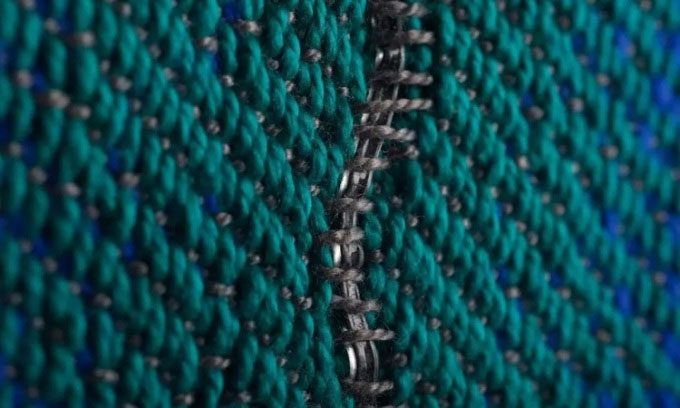Scientists at Nanyang Technological University have invented a fabric that can detect and produce sound.
Clothing made from this sound-sensitive fabric can continuously monitor heart rate or breathing in real-time based on vibrations on the skin. This allows the wearer to answer phone calls and communicate through their garments. Additionally, the new fabric can function as a hearing aid, helping individuals with hearing impairments navigate noisy environments.

The fabric that “listens” to sound. (Image: Fink Lab MIT/Elizabeth Meiklejohn RISD/Greg Hren)
Moreover, according to Wei Yan, an assistant professor at Nanyang Technological University and the head of the research team, their fabric can be integrated into spacecraft to detect accumulated space dust or used in buildings to identify cracks or stress points caused by pressure. It could even be woven into smart nets for monitoring fish in the ocean.
The researchers produced the sound-sensitive fabric by using elastic fibers made from piezoelectric materials, which are highly responsive to electrical signals. The new fabric captures tiny vibrations and converts them into electrical signals, which are recorded on a device for later analysis. The team stated that their design is inspired by the way the human ear functions, including the process of converting vibrations into analog signals.
To demonstrate their idea, Yan and his colleagues subjected the specially woven fabric to a range of sound vibrations, from the quiet of a library to the noise of heavy traffic. The product successfully converted vibrations into suitable electrical signals.
On the other hand, the research team is also exploring whether the new fabric can operate as a speaker, translating electrical signal data into vibrations that we can hear. They recorded a series of words and embedded the recording into the fabric. The fabric then captured the electrical signals and converted them back into background vibrations that the human ear can detect.
In their first experiment, the team sewed the fabric into the back of a t-shirt and clapped while standing in various positions. They wanted to see if the fabric could determine the direction of the sound source. The result was that the product detected the angle of sound from a distance of 3 meters. Next, the researchers sewed a composite fiber into the shirt’s hem and had a healthy volunteer wear it. As expected, the fabric accurately tracked the volunteer’s heart rate.


















































